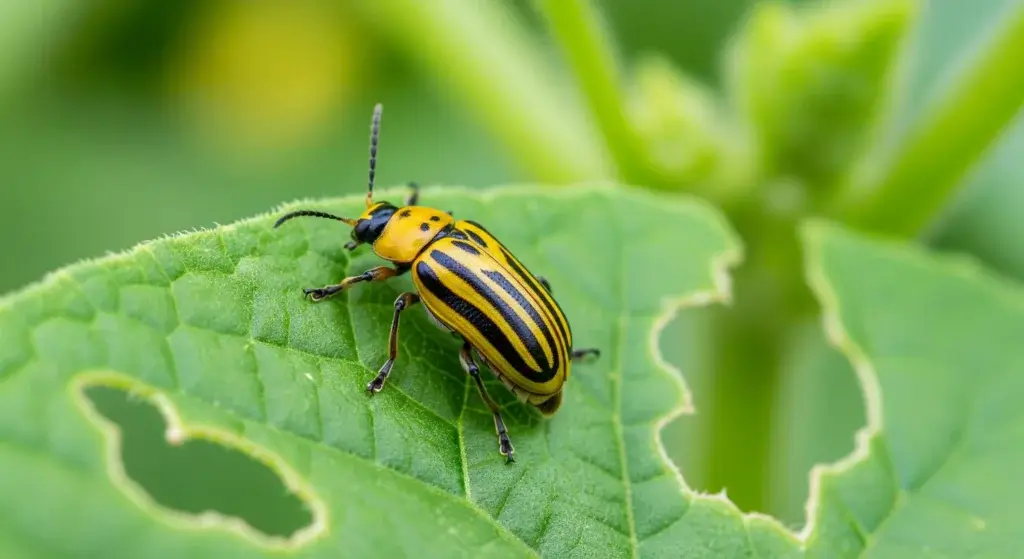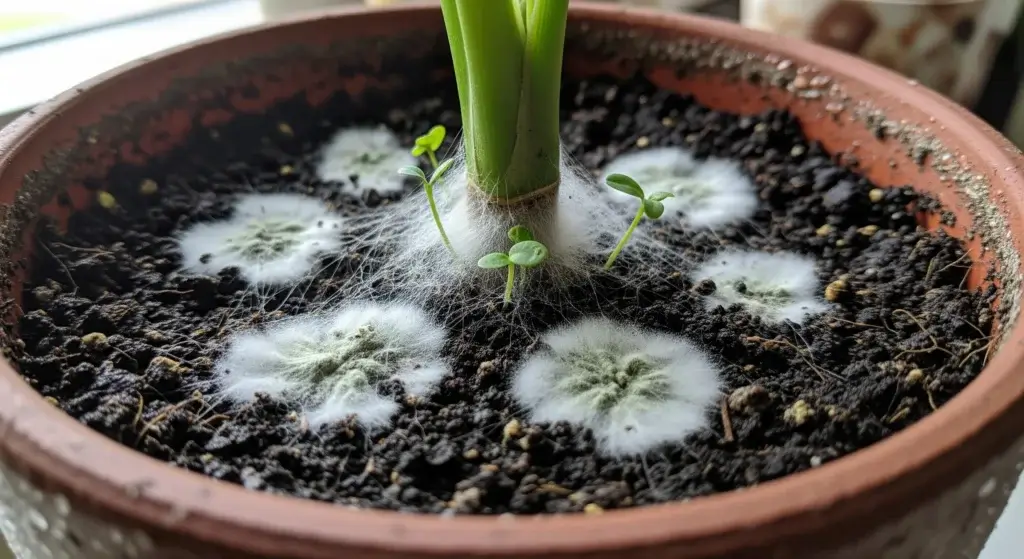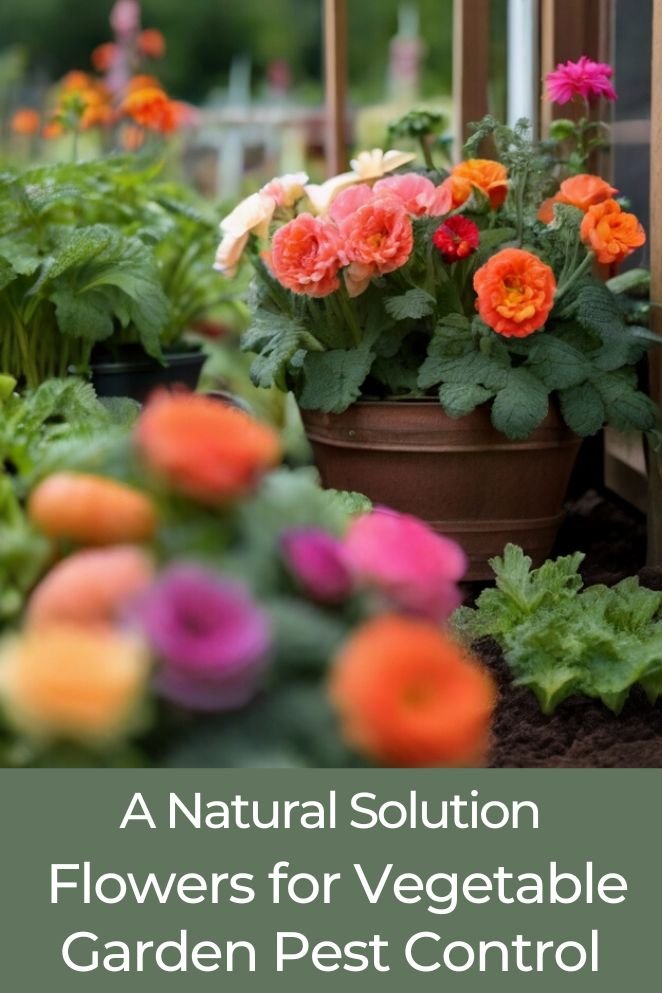
Vegetable gardens are a delight, but they often face the challenge of pests that can harm our precious plants.
While traditional pesticides may seem like a quick fix, they come with their own set of drawbacks.
In this article, we will explore a natural and colorful alternative: using flowers for vegetable garden pest control.
We’ll discuss the downsides of traditional pesticides, the top flowers for pest control, tips on incorporating them into your garden, and common mistakes to avoid.
The Challenges of Pests in Vegetable Gardens
Maintaining a flourishing vegetable garden comes with its joys and rewards, but it also presents the ongoing challenge of managing pest infestations.
These unwelcome visitors, such as:
- Read also: A Guide to Natural Pesticides for Tomatoes
- Read also: Natural Pesticides for Avocado Trees
Aphids
Aphids, those tiny, sap-sucking insects, may seem innocuous individually, but their ability to reproduce rapidly can turn them into a formidable force.
These pests target the tender parts of your vegetable plants, leaving behind stunted growth and distorted foliage.
Caterpillars
Caterpillars, with their voracious appetites, can swiftly devour the leaves of your vegetable crops.
Left unchecked, they can significantly reduce the overall yield of your garden.
Beetles
Beetles, ranging from flea beetles to Colorado potato beetles, can inflict substantial damage on your vegetable plants.
These pests chew on leaves, leaving behind a trail of destruction.
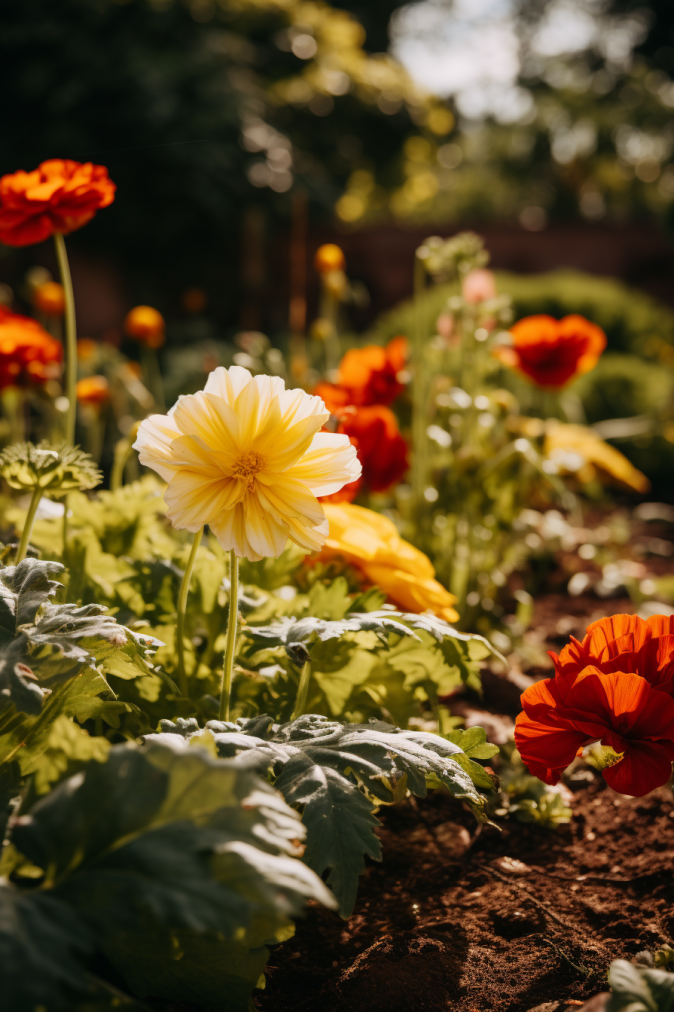
The Downsides of Traditional Pesticides
In the quest for pest-free gardens, traditional pesticides have long been the go-to solution.
However, delving into their usage reveals a spectrum of downsides that extend beyond their immediate effectiveness.
Harm to beneficial insects
While pesticides target pests, they are indiscriminate in their impact.
Beneficial insects, crucial for maintaining a balanced ecosystem, often fall victim to chemical assault.
Bees, ladybugs, and other pollinators, vital for plant reproduction, can suffer, disrupting the delicate harmony of your garden.
Soil and water contamination
The fallout from pesticide use doesn’t end with pests.
These chemicals have the potential to seep into the soil and water, causing contamination.
This contamination not only affects the immediate growing environment but can also have far-reaching consequences for ecosystems, wildlife, and even human populations.
Risks to human health
Pesticides can pose direct risks to human health, especially when not used with caution.
Exposure through skin contact, inhalation, or ingestion can lead to a range of health issues, from respiratory problems to more severe long-term effects.
Safe handling practices are crucial, but the inherent risks persist.
Development of pesticide resistance
Pests are remarkably adaptive, and prolonged exposure to pesticides can lead to the development of resistance.
Over time, the targeted pests evolve to withstand the chemical onslaught, rendering the once-effective pesticides less potent.
This phenomenon necessitates a continuous cycle of developing stronger pesticides, perpetuating the environmental impact.
Ecological imbalance
The unintended consequences of pesticide use can upset the delicate balance of ecosystems.
Disruptions in insect populations, both harmful and beneficial, can have cascading effects on other flora and fauna.
This ecological imbalance may trigger unforeseen consequences, creating a chain reaction of environmental challenges.
Flowers for Vegetable Garden Pest Control
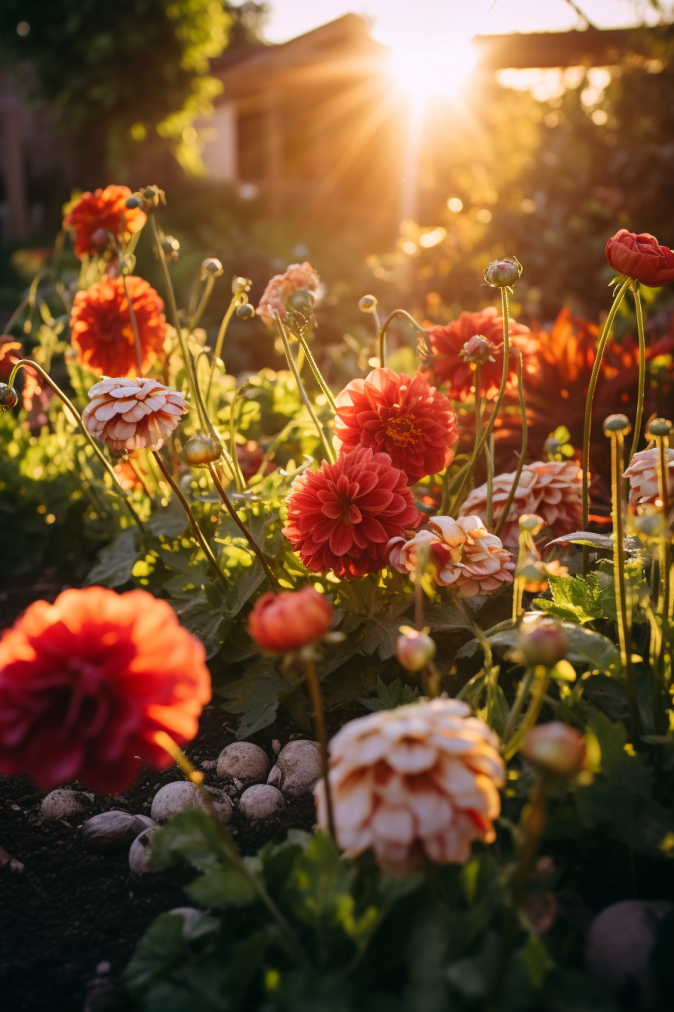
Delving into the world of floral companions reveals a natural and aesthetically pleasing solution to pest control that harmonizes with the environment.
Marigolds
Glowing with hues of gold and orange, marigolds bring more than just visual appeal to your garden.
These resilient flowers boast natural properties that deter nematodes, and microscopic pests that can wreak havoc on the roots of your vegetables.
Planting marigolds as a border or interspersed among your vegetables can act as a protective barrier, keeping nematodes at bay.
Lavender
Lavender, with its soothing fragrance and delicate purple spikes, is not just a sensory delight; it’s also a natural pest deterrent.
This versatile flower has the ability to repel moths, fleas, and flies, acting as a fragrant shield for your vegetable garden.
Placing lavender strategically around your garden beds not only adds a touch of elegance but also contributes to the defense against unwanted pests.
Chrysanthemums
Chrysanthemums, with their vivid array of colors, harbor a powerful secret weapon – pyrethrin.
This natural insecticide found in chrysanthemum flowers is effective against a variety of pests, including mosquitoes, roaches, and ticks.
Introducing chrysanthemums to your garden landscape provides an ongoing, floral defense system against common nuisances.
Nasturtiums
Nasturtiums, with their vibrant blooms and rounded leaves, offer a dual-purpose defense against pests.
These flowers not only attract predatory insects like ladybugs, which feast on aphids, but they also release a substance that acts as a natural deterrent to aphids.
Placing nasturtiums near susceptible vegetables creates a protective alliance that safeguards against aphid invasions.
Sunflowers
Standing tall and proud, sunflowers not only add a sunny disposition to your garden but also act as guardians against cucumber beetles.
These towering blooms serve as a visual distraction for these beetles, drawing them away from your precious vegetable crops.
Planting sunflowers strategically can help protect your garden from the relentless march of cucumber beetles.
How do pest-control flowers work to control pests in vegetable gardens?
Pest-control flowers work to control pests in vegetable gardens by attracting beneficial insects that prey on garden pests or by repelling harmful insects.
For example, marigolds are known to deter nematodes, while lavender can repel moths, fleas, and flies.
Flowers such as borage, chrysanthemums, dahlias, four o’clock, and marigolds can be grown alongside vegetables to help control pests.
Some flowers contain properties that either invite beneficial insects or repel harmful insects.
Beneficial insects prey on pests that cause damage in the garden, such as ladybugs and praying mantises.
Using flowers for pest control not only cuts down on workload but also reduces the amount of pesticides that need to be used, which in turn means more good bugs to help control bad bugs.
When incorporating pest-control flowers into a garden, it is important to choose a variety of flowers to attract different beneficial insects and to research which flowers are best suited to the specific region and growing conditions.
Tips on Incorporating Pest-Control Flowers into Your Garden

Here are some insightful tips to seamlessly weave these floral defenders into your green haven, enhancing both aesthetics and functionality.
Strategic placement for maximum impact
When introducing pest-control flowers, think strategically about their placement.
Consider planting them alongside your vegetable beds or in border areas.
This tactical arrangement creates a natural barricade, discouraging pests from encroaching on your precious crops.
Flowers like marigolds and nasturtiums are excellent choices for this protective border strategy.
Diversity is the key
Diversify your floral selection to cast a wider net for beneficial insects.
Different flowers attract various predators, creating a balanced ecosystem within your garden.
Opt for a mix of colors, shapes, and sizes to ensure a visually appealing and effective defense against pests.
The synergy of diverse blooms encourages a broad spectrum of beneficial insects, such as ladybugs and lacewings, which are voracious predators of common garden pests.
Companion planting strategies
Leverage the concept of companion planting by strategically pairing pest-control flowers with specific vegetables.
For instance, planting chrysanthemums near tomatoes can deter aphids, while sunflowers can stand sentinel against cucumber beetles.
This intentional coupling not only maximizes the protective benefits of flowers but also fosters a harmonious coexistence among your garden plants.
Seasonal considerations
Be mindful of the blooming seasons of your chosen pest-control flowers. Aim for a succession of blooms throughout the growing season to maintain a steady influx of beneficial insects. This thoughtful approach ensures that your garden remains safeguarded against pests, providing ongoing protection for your vegetables.
Regular monitoring and maintenance
While pest-control flowers work wonders, regular monitoring and maintenance are essential.
Keep an eye on the health of both your flowers and vegetables, addressing any signs of distress promptly.
Prune and deadhead your floral defenders as needed to encourage continuous blooming and maintain their effectiveness in deterring pests.
Common Mistakes to Prevent
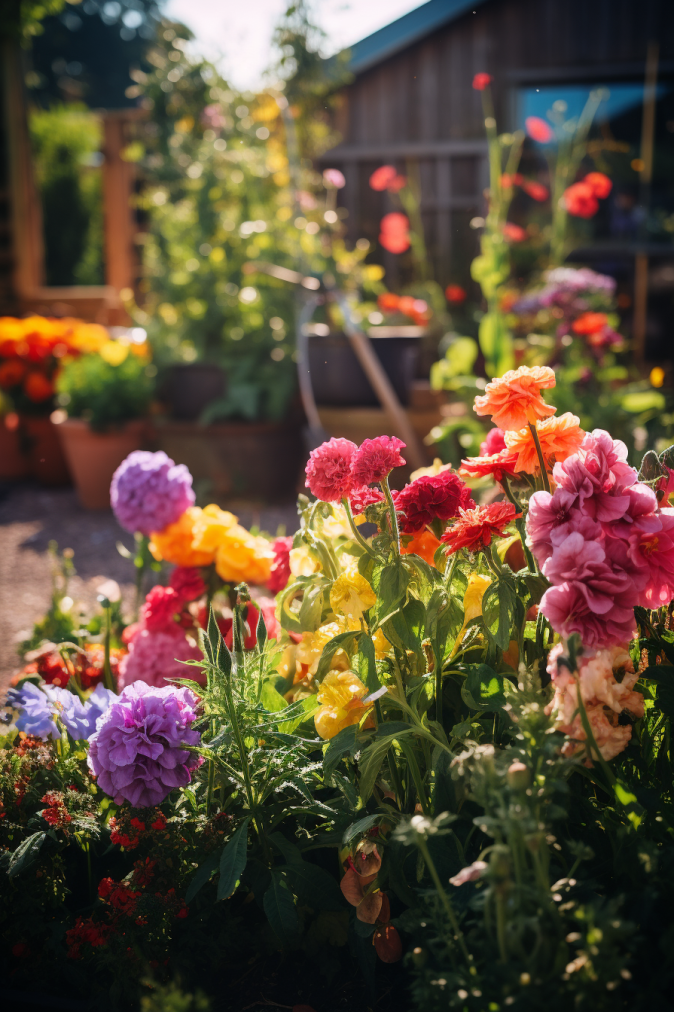
As you embark on the journey of utilizing flowers for pest control, steering clear of common pitfalls ensures a garden that not only blooms beautifully but also thrives in a harmonious pest-resistant environment.
Here are key mistakes to sidestep for a flourishing floral haven:
Monoculture misstep
Planting a multitude of the same flower may seem like an easy route, but it can lead to a monoculture misstep.
This approach could attract a specific type of beneficial insect, leaving your garden vulnerable to a broader spectrum of pests.
Diversify your floral selection to invite a diverse array of beneficial insects, creating a balanced and resilient ecosystem.
Neglecting regional relevance
Overlooking the importance of regional and climatic considerations can hinder the success of your pest-control floral strategy.
Different flowers thrive in various climates, and their effectiveness in attracting beneficial insects may vary.
Research flowers that are well-suited to your specific region and growing conditions, ensuring they can withstand local weather patterns and contribute effectively to your garden’s defense against pests.
Timing troubles
Misjudging the timing of your floral plantings can be a common oversight.
Flowers should be strategically planted to align with the growing season and the lifecycle of targeted pests.
Ensure a continuous succession of blooms to attract beneficial insects throughout the season, preventing gaps in your garden’s defense against pests.
Ignoring companion planting principles
Failing to consider companion planting principles is a mistake that can compromise the synergy between flowers and vegetables.
Certain flowers complement specific vegetables, deterring pests that may affect the neighboring crops.
Understanding these plant pairings enhances the protective impact of your floral defenders on your entire garden.
Underestimating maintenance needs
While flowers contribute to a vibrant garden, underestimating their maintenance needs is a potential pitfall.
Regular pruning, deadheading, and monitoring for signs of stress or disease are crucial tasks to uphold the effectiveness of your pest-control flowers.
A well-maintained garden not only looks appealing but also functions optimally in deterring pests.
- Read also: Natural Pesticides for Indoor Plants
- Read also: Natural Pesticides for Your Roses
Conclusion
The use of flowers as a strategy for pest control in vegetable gardens presents a natural, sustainable, and aesthetically pleasing alternative to conventional pesticides.
By delving into the intricacies of garden pests, acknowledging the limitations of traditional pesticides, and embracing the multifaceted benefits of pest-control flowers, gardeners can cultivate not only a visually stunning garden but also a harmonious and thriving ecosystem.
In this floral partnership, beauty and functionality converge to create a sustainable haven where the delicate dance of nature unfolds with grace.
FAQs
While pest-control flowers can be effective against many common garden pests, they may not provide complete protection. It’s best to use them as part of an integrated pest management approach.
Absolutely! Pest-control flowers can be incorporated into gardens of all sizes, from small raised beds to larger plots. Their beauty and benefits make them a valuable addition to any garden.


